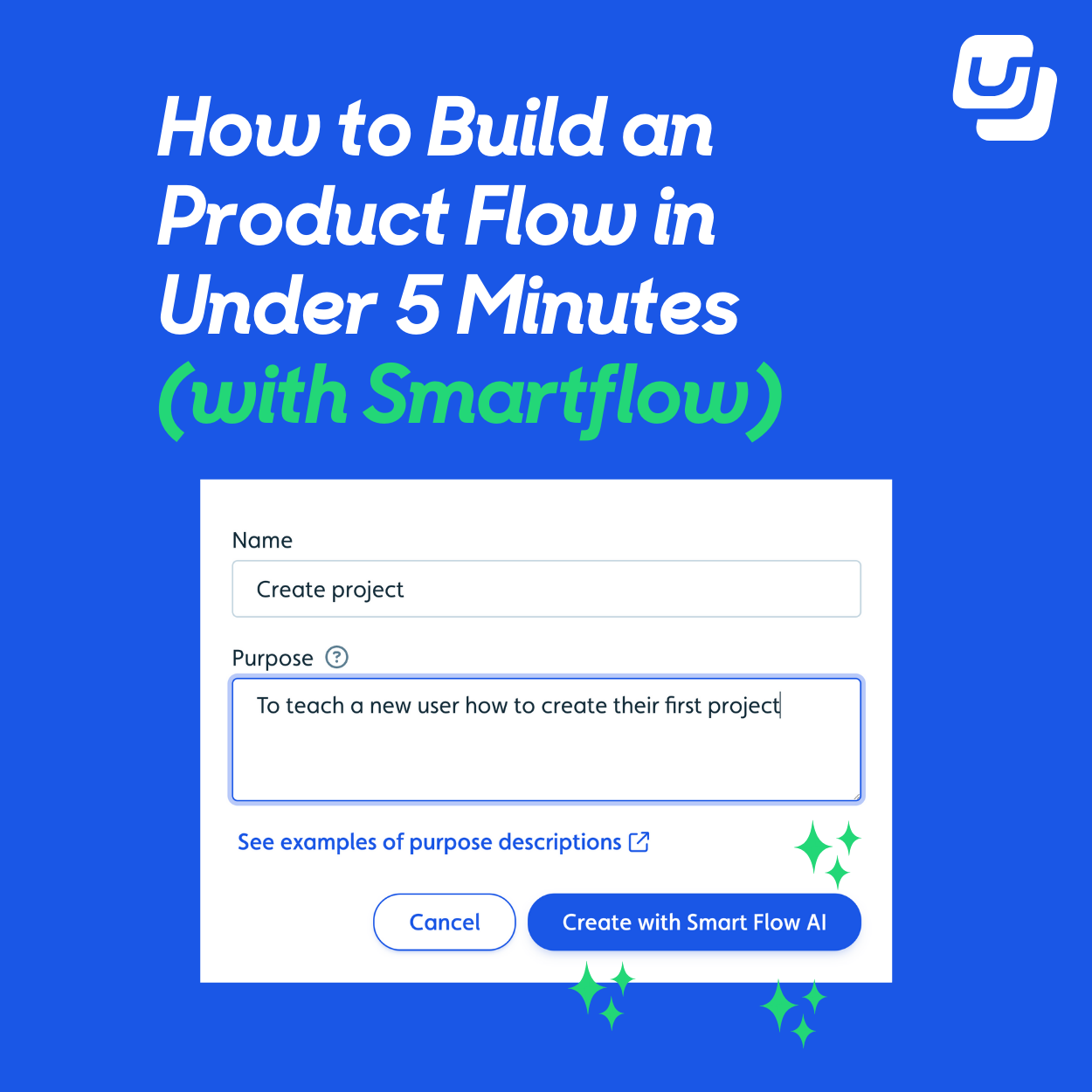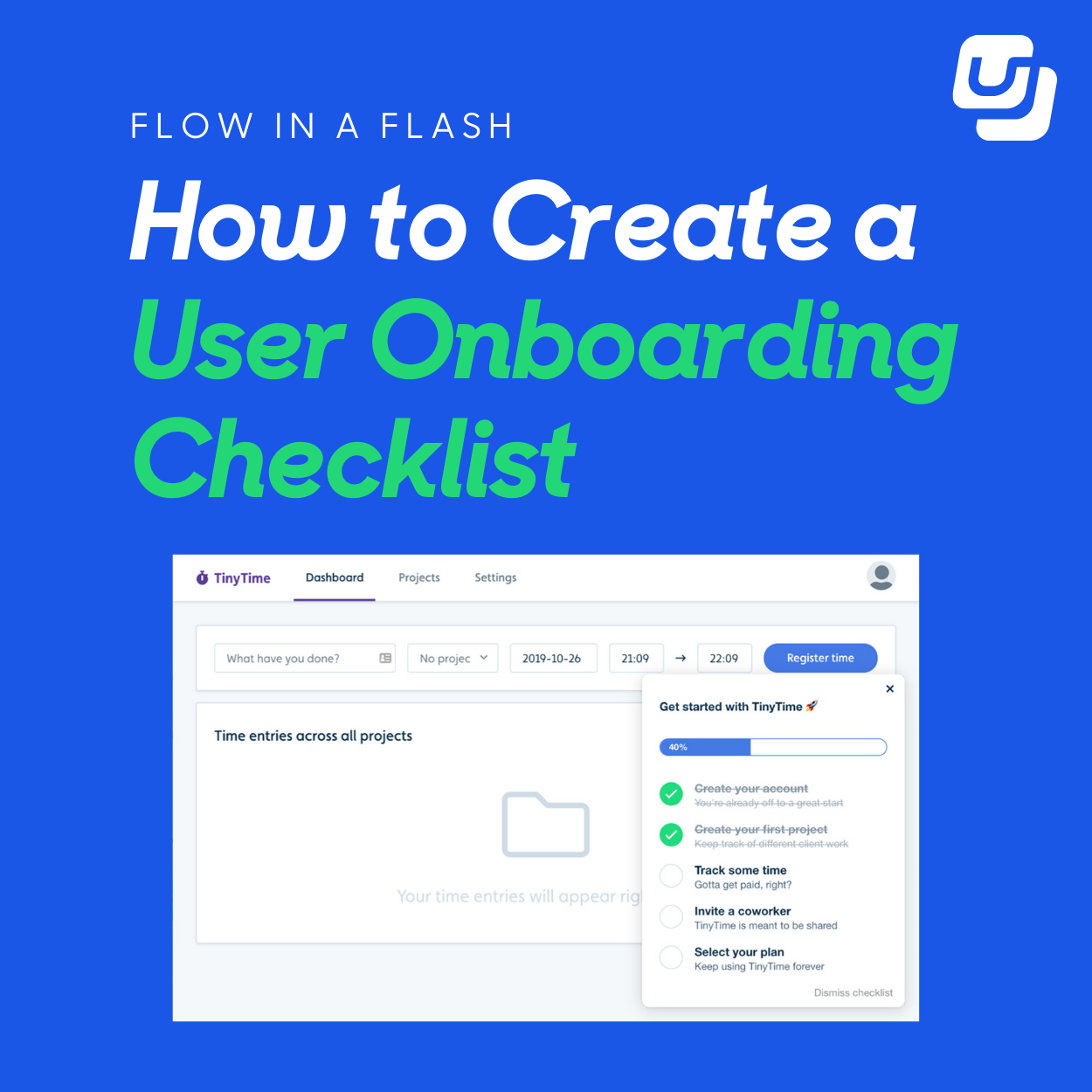First impressions matter. And more so for SaaS products. A user’s first interaction with your platform can determine whether they stick around or churn. A strong onboarding experience is key to getting users to value fast, and one of the most effective tools to guide them through this journey is the product onboarding checklist.
We'll cover:
- What a product onboarding checklist is
- Why it's critical for SaaS companies
- How to build one step-by-step
- 12 best practices
- Tools you can use to build your checklist without code
By the end, you’ll have a complete playbook to design and deploy onboarding checklists that turn new signups into long-term customers.
What Is a Product Onboarding Checklist?
A product onboarding checklist is a visual, interactive list of actions that new users should complete to get started with your product. It usually appears within the product interface, often in the form of a sidebar widget or pop-up module.
Each checklist item typically corresponds to a task critical to:
- Helping the user set up their account
- Introducing core product features
- Reaching their first "aha" moment
The goal is to guide users step-by-step through these essential actions so they don’t get lost or overwhelmed.
Onboarding checklists often include UI elements like tooltips, modals, and progress bars to keep the experience engaging and visually intuitive.
Why Onboarding Checklists Matter for SaaS Companies
So, what do onboarding checklists exactly do for SaaS companies? A whole lot actually.
1. Drive Activation
Your onboarding experience should help users achieve their activation milestone: the point at which they experience meaningful value. Checklists simplify this journey by clearly showing what steps users need to take.
2. Improve Retention and Reduce Churn
Users who complete onboarding are far more likely to stick around. When users are left to guess what to do, they churn. Checklists give users clarity, structure, and momentum that motivate them to continue.
3. Reduce Support Load
When users can onboard themselves with minimal friction, they send fewer support tickets. Onboarding checklists reduce reliance on customer success and support teams. That's hours saved that your support teams can redirect towards more complex support requests.
4. Scale Your Growth Efficiently
A great checklist can deliver a repeatable onboarding experience at scale. This is essential for SaaS companies operating with a product-led growth (PLG) strategy.
The Psychology Behind Checklists
Checklists work because they tap into basic human psychology. Here are the three core types of user psychology that onboarding checklist activates to push adoption.
- Zeigarnik Effect: We remember incomplete tasks better than completed ones, motivating users to finish what they started.
- Gamification: Progress bars, checkmarks, and celebratory animations trigger dopamine, creating a sense of accomplishment.
- Commitment Bias: Once a user starts completing tasks, they’re more likely to continue the journey.
Core Components of a Successful Onboarding Checklist
So now that we've covered the what and why, let’s break down what goes into a great onboarding checklist that motivates action and supports the complete user journey. These will include any onboarding elements that may be in the checklist as action items.
1. Welcome Message and Account Setup
- Greet the user by name
- Reiterate your value proposition
- Let them know what to expect in the onboarding process
2. User Goal or Persona Selection
- Ask users about their use case or goals
- Segment onboarding flows based on user personas
3. Key Setup Tasks and Feature Highlights
- Add profile and company branding
- Connect tools (e.g., calendar, CRM)
- Highlight key product features using tooltips and modals
- Encourage users to complete tasks sequentially
4. Walkthroughs and Interactive Learning
Use walkthroughs, tutorials, and tours to onboard users interactively. Let users explore features relevant to their goals with contextual guidance.
5. First Value Task (Activation)
Define the one action that delivers value. This could be launching a campaign, sending an invoice, or completing a document. Celebrate with a progress bar update or animation.
6. Support and Resources
Show users where to find your knowledge base, resource center, or support chat. This increases confidence and improves the customer journey.
7. Feedback and Surveys
Prompt users with app surveys after onboarding steps to collect feedback. Use this data to refine the experience.
Mapping the Onboarding Journey
Once you have the components down, now it's time to actually order them properly. To design a great onboarding checklist, map out the full user journey with all relevant touchpoints:
- Signup
- Persona selection
- Key setup tasks
- Feature introductions
- Activation
- Expansion or upsell prompts
Each stage should have clear, actionable checklist items that motivate users to keep progressing.
How to Build a Product Onboarding Checklist
All right, so we have everything we need now. All the ingredients are in place. It's time to cook up a product onboarding checklist.
Step 1: Define Your Activation Metric
Know what success looks like. What’s the one action users must take to realize value? Clearly define your north star metric and direct every action item in the checklist towards that goal.
Step 2: Map the Ideal First-Time User Journey
List all steps that logically lead to activation. Order them from simplest to most involved. Use analytics to identify friction points and adjust accordingly.
Step 3: Create Checklist Items with Clear UI Elements
Use concise copy and embed helpful UI elements such as:
- Tooltips
- Modals
- Progress bars
These UX enhancements help users move smoothly through the onboarding process.
Step 4: Add Personalization Based on Personas
Segment users based on their persona, role, or free trial goal. Tailor the checklist using data gathered in app surveys or welcome modals.
12 Best Practices for Building a High-Performing Onboarding Checklist
Not all checklists are created equal. The most effective onboarding checklists are focused, motivating, and deeply tied to the onboarding process. Follow these best practices to craft a checklist that drives activation, supports retention, and improves the overall user journey.
1. Limit the checklist to 3–5 key items
Too many steps can overwhelm users and increase churn. Focus on the core actions that guide users toward value—like connecting tools, completing a first task, or exploring critical product features.
2. Use clear, benefit-oriented language
Each checklist item should be actionable and outcome-driven. For example, replace “Setup profile” with “Add your logo to personalize your dashboard.” This makes the onboarding process feel more rewarding and focused.
3. Guide users with tooltips and modals
Contextual help matters. Use tooltips to highlight key elements and modals to explain more complex steps. This keeps the onboarding experience intuitive and encourages adoption without users having to leave the app.
4. Include a visible progress bar
Progress indicators like “2 of 4 steps completed” reinforce the sense of forward motion. A visual indicator supports motivation, drives activation, and helps users feel in control of their customer journey.
5. Break big tasks into small milestones
Help users build momentum by dividing larger actions into smaller wins. For example, “Launch a campaign” can become “Choose a template,” “Write your message,” and “Click send.” This structure supports retention and reduces drop-off.
6. Focus on the activation moment
The best onboarding checklists lead users directly to their first “aha” moment. Whether that’s publishing content, inviting a teammate, or completing a form, define your activation milestone and build the onboarding flow around it.
7. Personalize based on user persona or goal
Effective onboarding should be personalized. Use surveys or welcome modals to segment users by role or objective, and adjust the onboarding checklist accordingly. For example, sales teams and marketers may need different tutorials.
8. Make the checklist easy to revisit
Let users return to the checklist at any time. Keep it visible via a sticky widget, sidebar, or dashboard prompt—so they can resume their onboarding process without friction.
9. Celebrate progress with small rewards
Positive reinforcement works. Use checkmarks, success animations, or micro-celebrations to encourage users. These small touches increase satisfaction and support long-term adoption.
10. Track engagement using product analytics
Monitor checklist performance with analytics tools like Appcues, Userflow, or internal dashboards. Track completion rates, drop-offs, and activation time. Use this data to iterate and improve your onboarding experience.
11. Pair your checklist with other onboarding tools
An onboarding checklist is most effective when paired with other patterns like walkthroughs, tooltips, tutorials, and resource centers. Together, these create a robust self-serve onboarding experience that guides users through the entire customer journey.
12. Collect feedback and optimize continuously
After users complete their checklist, ask for feedback. Use in-app surveys or NPS tools to learn what worked and what didn’t. Then iterate. A great onboarding experience is never static—it evolves with your product and users.
Checklists Are Your Onboarding Power Tool
A high-performing onboarding checklist is more than just a UI element. It’s a strategic tool that accelerates activation, reduces churn, and drives long-term retention.
Done right, it:
- Aligns with your user's journey
- Adapts to user personas and use cases
- Delivers a seamless onboarding experience
- Converts and retains users
Whether you're optimizing for self-serve free trial users or guiding enterprise teams, a great checklist can help you increase engagement and conversion.
So, are you ready to build a checklist? Try Userflow. It has everything you need to create personalized, interactive onboarding flows with checklists, walkthroughs, surveys, and more. Empower your users to succeed from day one.
CONTENTS













%20(2).png)









